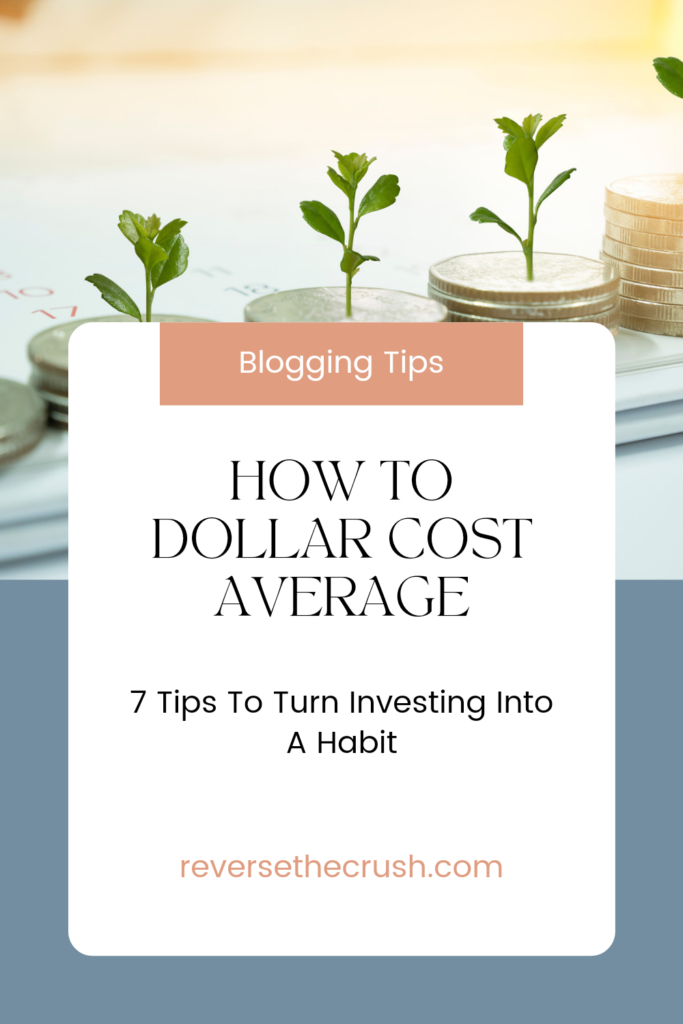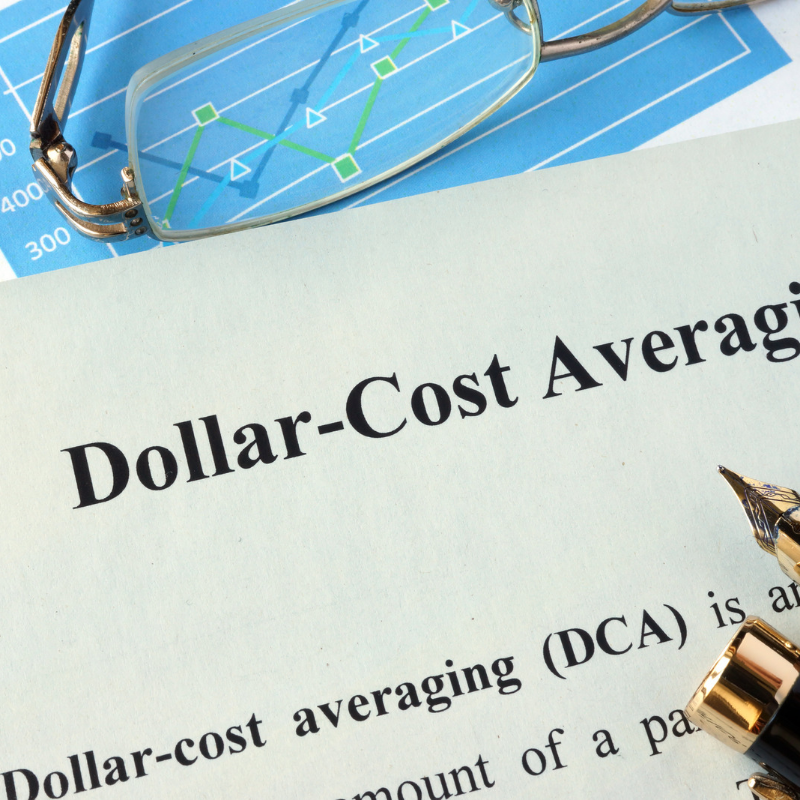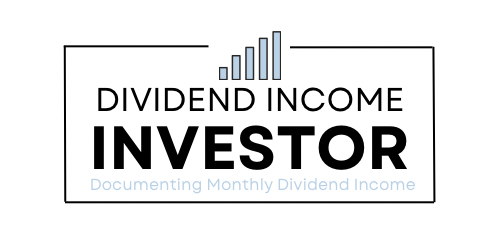How to dollar cost average: 7 tips to dollar cost average. Turn investing into a habit instead of trying to time the market by using this technique. This post contains affiliate links. Please note that I am not a licensed advisor and this is not investment advice. It is for entertainment purposes only.
One of the most challenging parts about investing is knowing when to invest.
To put it bluntly, it’s nearly impossible to time the market, even for professionals.
On top of that, investors have to deal with a bombardment of noise and news every day.
For every bullish article, there’s a bearish article. For every stock tip, there’s another friend who is advising you to sell.
So, how is an investor supposed to know when to invest?
Since it’s impossible to time the market, the best course of action an investor can take is to make investing a habit.
After all, time in the market is better than trying to time the market.
In this post, I will show you how to dollar cost average.
Let’s dive in.

What Is Dollar Cost Averaging?
Dollar cost averaging is a useful investing technique that turns buying investments into a habit.
In short, dollar cost averaging means you invest money regularly at scheduled intervals, regardless of market fluctuations.
Rather than waiting for a market correction or trying to time the market, you just invest regularly.
Furthermore, dollar cost averaging can be done with a fixed amount of money or a varying amount of money.
Whether the market goes down or up, you just keep investing on a schedule that works for you.
Ideally, dollar cost averaging will prevent you from investing in the market at the wrong time. Again, it’s about turning investing into a habit.
The idea behind dollar cost averaging is that your average investment cost will be lower than the price of the investment in 5 to 10 years. The longer the time frame, the better.
Sometimes you will buy when the market is higher. Sometimes you will buy when the market is lower. Overall, the average price you buy an investment at will be lower than it is in 5 to 10 years.
How To Dollar Cost Average
Here are 7 tips to start dollar cost averaging.
1. Select A Time Frame To Invest Regularly
The first step to begin dollar cost averaging into positions is choosing an investment interval.
Basically, you can dollar cost average bi-weekly, monthly, quarterly, semi-annually, or annually.
You can base it on when you get paid from work, or you can choose another interval that works for you.
Personally, I prefer to dollar cost average on pay days. Whenever I get paid, I invest in stocks.
Alternatively, you could let the cash build up for a while longer to have more to invest.
This choice should largely depend on commission fees. If you have a zero-commission broker, investing every pay day makes sense.
But if your broker has more expensive commission costs, it makes more sense to let the money build up.
2. Create A Predetermined List Of Investments To Invest In
Before you can dollar cost average into investments, you need to know what you want to invest in.
As such, I would recommend creating a predetermined list of investments to invest in.
To do this, you will need to form an investment style, analyze the investments, and maintain a portfolio watch list.
This way, you can automatically invest in positions on your list on your scheduled interval.
If you are an index investor, this step will be easier. All you need to do is consistently buy the indices, ETFs, or mutual funds you invest in. Less analysis is required.
3. Invest In The Best Valued Asset At The Time Of Your Purchase
If you invest in individual stocks, I would recommend investing in the best valued stock at the time of your purchase.
On your scheduled interval, quickly review your predetermined list of investment options to find the stock that is the most undervalued.
Then, invest in whatever option appears to be the most undervalued.
4. Invest Consistently For The Long Term
Once you have the framework set up for dollar cost averaging, all you need to do is be consistent with it.
You need to stick to this plan for at least 5 to 10 years.
Investing is a long-term operation. It’s not something you do for 6 months and then change your mind.
If you are going to do that, don’t even bother.
Just pay yourself first and dollar cost average into investments for years.
Do this consistently for as long as you can.
Don’t worry about the market fluctuations. Focus on the habit of paying yourself first and investing, regardless of how the market is doing.

5. Keep Fees Low
One of the easiest ways to increase your returns is to keep fees as low as possible.
Find a zero-commission stock broker, or at least a low-cost option.
I use WealthSimple because it offers zero-commission trades.
To reduce fees with RBC Direct Investing, I use credit card points to pay for trades.
Another good option to consider is Questrade, because you can invest in ETFs for free. If you open an account with my special Questrade offer, you will get $50 worth of trades for free.
6. Rebalance Your Portfolio
If you invest for long enough, some of your positions could become proportionately large in comparison to the rest of your portfolio.
For example, if one stock does so well it becomes 20% of your total portfolio, you might want to sell it to be diversified enough. Ideally, each position should be 5% or less of your portfolio.
Alternatively, if one of the businesses in your portfolio fundamentally changes, you might need to sell it and reinvest in something else.
This is why it’s important to stay on top of your portfolio.
Related article: How To Monitor Your Investments: 9 Foolproof Ways To Stay On Top Of Your Portfolio
7. Continue To Analyze Your Investments
Even though saving and investing is a habit, you will still need to analyze your investment portfolio.
Of course, you don’t have to do this if you are an index investor.
But if you buy and sell your own stocks, at the very least, you should review your portfolio positions quarterly during earnings.

How To Dollar Cost Average – Final Thoughts
Now you know how to dollar cost average and turn investing into a habit.
I have personally used dollar cost averaging to build my portfolio to the point it is today.
It has helped me build the right habits and avoid trying to time the market.
If I tried to time the market, I might have missed a lot of opportunities over the last year or two.
Back in March 2020, instead of freaking out, I just kept buying stocks. This led to amazing returns on stocks such as Royal Bank (RY) and Park Lawn Corporation (PLC).
And even as of now, with the market reaching all-time highs, I just keep buying.
Maybe the market will correct, who knows? Regardless of what happens, I will just keep buying because I have a long time frame before retirement.
Do you dollar cost average into investments?
Related Articles On Investing You Might Like
How To Find Which Stocks To Buy
Best Websites To Research Stocks: 6 Websites To Analyze Stocks
Investing Metrics For Research On Stocks: 10 Key Metrics
How Many Stocks Should You Own?
Types Of Investors In The Stock Market
How To Monitor Your Investments: 9 Foolproof Ways To Stay On Top Of Your Portfolio
I am not a licensed investment or tax adviser. All opinions are my own. This post may contain advertisements by Monumetric. This post may also contain internal links, affiliate links to BizBudding, Amazon, Bluehost, and Questrade, links to trusted external sites, and links to RTC social media accounts.
Connect with RTC
Twitter: @Reversethecrush
Pinterest: @reversethecrushblog
Instagram: @reversethecrush_
Facebook: @reversethecrushblog
Email: graham@reversethecrush.com


 Dividend Income June 2021 (New Record)
Dividend Income June 2021 (New Record)
